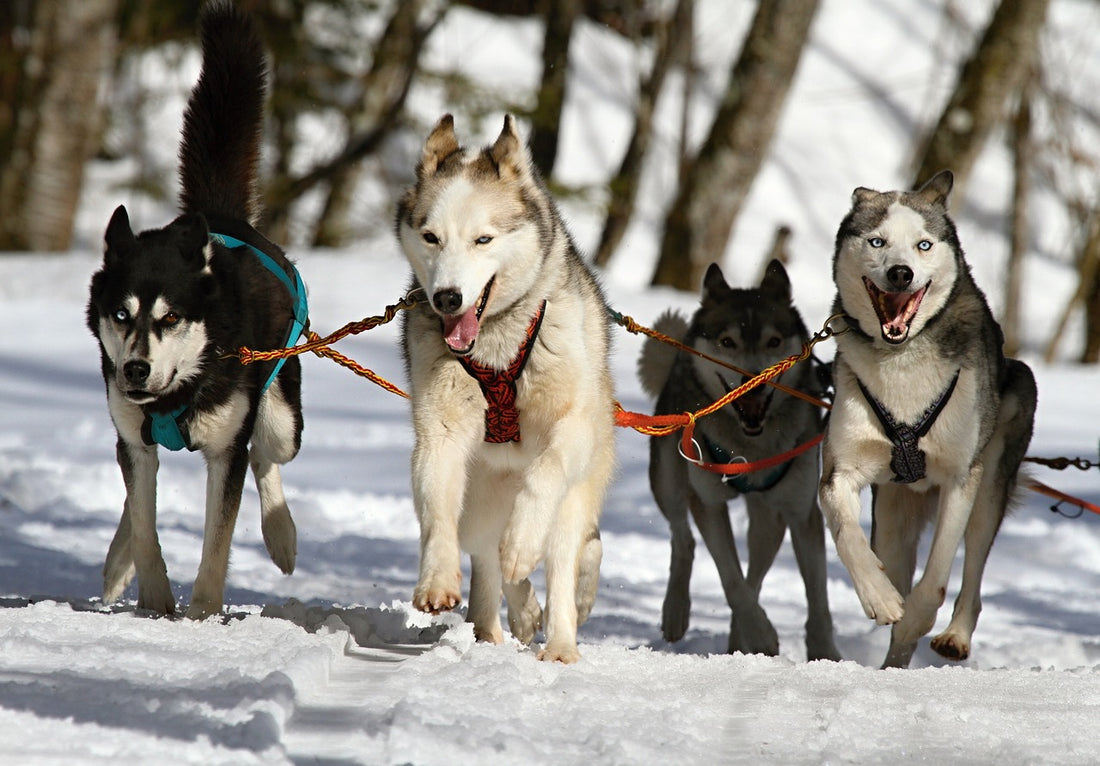
Chilly Challenges: Working Your Dog in Extreme Cold Weather
Share
Working dogs are extraordinary partners, known for their dedication, intelligence, and tireless efforts in various roles. However, when it comes to working your dog in extreme cold weather, there are unique challenges and considerations to keep in mind. In this blog post, we'll explore the potential risks and safety measures associated with working your dog in frigid temperatures, ensuring their well-being while achieving your goals.
Understanding the Risks in Extreme Cold
-
Hypothermia:
- Extreme cold can lead to hypothermia in dogs, which is a dangerous drop in body temperature.
- Signs of hypothermia include shivering, lethargy, weakness, and pale gums.
- Severe hypothermia can be life-threatening.
-
Frostbite:
- Dogs are susceptible to frostbite, especially on their ears, tails, and paws.
- Frostbitten areas may appear pale, gray, or hard to the touch.
- Frostbite can result in tissue damage and necessitate veterinary care.
-
Reduced Stamina:
- Cold weather can reduce a dog's endurance and energy levels.
- Working your dog in extreme cold may require more effort, shorter shifts, and frequent breaks.
Safety Precautions for Working Your Dog in Extreme Cold
-
Adequate Insulation:
- Outfit your dog with a winter coat or sweater to provide extra insulation.
- Ensure it fits well and covers their chest and belly.
-
Proper Footwear:
- Protect your dog's paw pads from cold surfaces and ice with booties.
- Regularly check for ice or snow buildup between their toes.
-
Adequate Shelter:
- Provide shelter from the cold, wind, and precipitation during breaks.
- Insulated dog houses or portable tents can be useful.
-
Regular Monitoring:
- Keep a close eye on your dog's behavior and body condition.
- Look for signs of discomfort or cold-related issues.
-
Maintain Hydration and Nutrition:
- Ensure your dog remains well-hydrated and fed during work.
- Cold weather may increase their calorie requirements.
-
Limit Exposure:
- Minimize the time spent working in extreme cold conditions.
- Consider shorter shifts or alternating dogs if possible.
-
Grooming:
- Keep your dog's fur clean and well-groomed to help maintain insulation.
- Be cautious when trimming their coat in winter.
Conclusion
Working your dog in extreme cold weather requires a thoughtful approach that prioritizes their safety and comfort. By understanding the potential risks and implementing these safety precautions, you can continue to work with your dedicated companion in challenging winter conditions while ensuring their well-being. Remember, your dog relies on you for their health and safety, so take the necessary steps to protect them during your cold-weather activities.